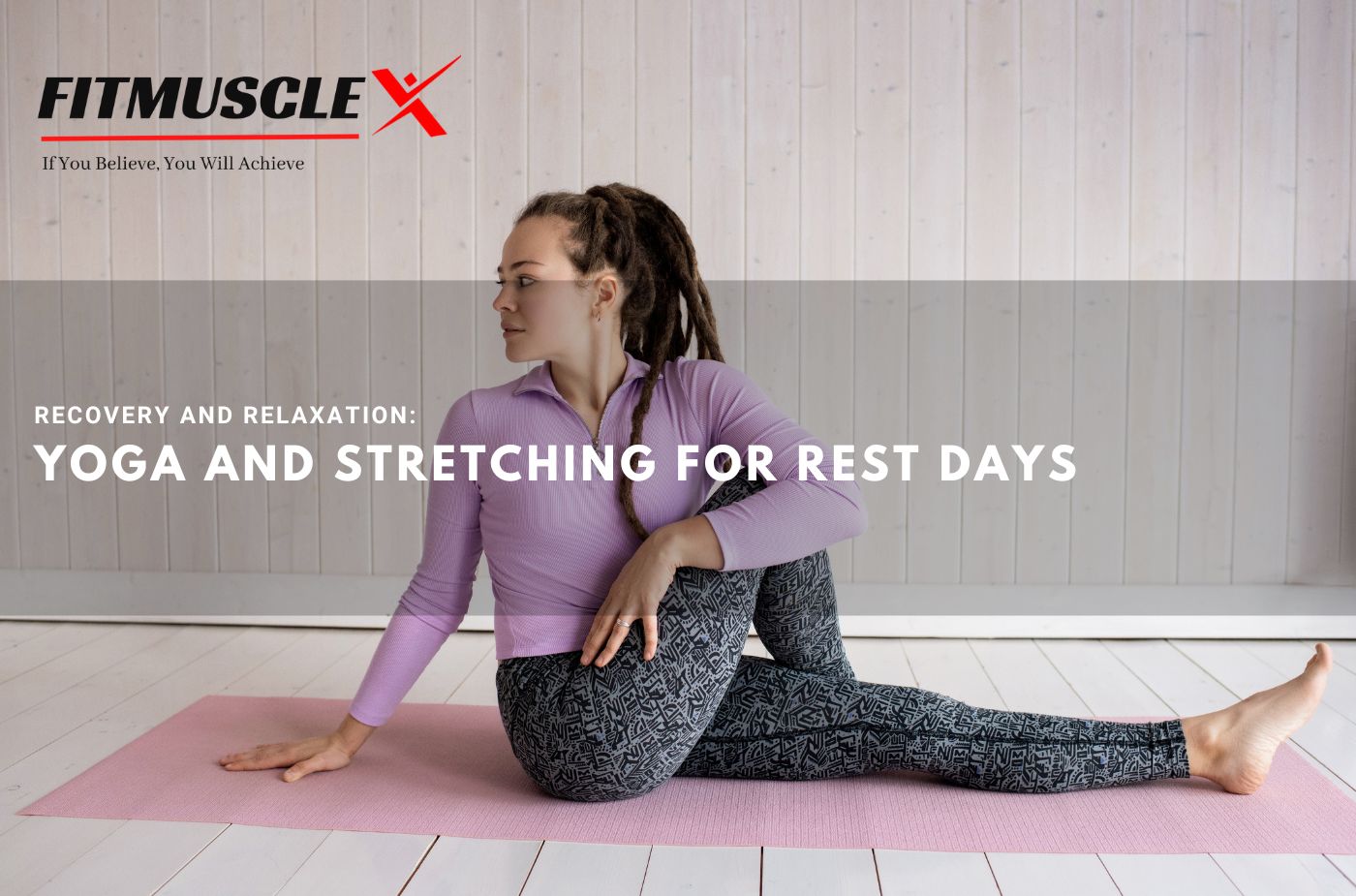It’s critical to give rest and recuperation first priority in our fast-paced environment when the daily grind can frequently leave us exhausted. Adding yoga and stretching to your rest days can benefit your body and mind, whether you’re an experienced athlete, a fitness fanatic, or someone who just wants to relax after a hard day. We’ll examine various methods and postures, talk about how to maximize your rest days and examine the advantages of yoga and stretching for healing in this blog.
The Value of Spending Days Off
Let’s first examine the importance of rest days before diving into the world of yoga and stretching. Muscles are strained and stressed when we exercise, be it through strenuous exercises, sports, or even regular tasks. While there’s no denying that exercise is good for your general health and well-being, our bodies mend and renew themselves when we sleep.
Our muscles grow weary when we don’t get enough sleep, which raises our risk of injury and gradually reduces our performance. Moreover, burnout, exhaustion, and even overtraining syndrome can result from persistent physical exertion without enough recovery. As a result, planning regular rest days into your exercise regimen is essential for maximizing results, avoiding injuries, and enhancing general health.
The Benefits of Stretching and Yoga for Healing
When it comes to healing and relaxation, yoga and stretching are complementary activities. Even though they might not seem as intense as high-intensity workouts, they have numerous advantages, particularly on rest days. Stretching and yoga help you heal in the following ways:
1. Enhanced adaptability
Improved flexibility and range of motion can be achieved by gently lengthening and elongating the muscles through stretches and yoga positions. This improved flexibility lowers the chance of injury during exercise in addition to improving athletic performance.
2. Improved airflow:
In order to increase circulation throughout the body, deep breathing and deliberate movement are incorporated into many yoga poses and stretching activities. Increased circulation results in more effective oxygen and nutrition delivery to the muscles.
3. Relieving Stress:
Particularly, yoga integrates a number of relaxation methods, including mindfulness, meditation, and deep breathing. Through the activation of the parasympathetic nervous system, these actions aid in lowering stress levels and fostering relaxation.
4. Recovering Muscles:
After strenuous exercise, gentle stretching speeds up healing by releasing tension and tightness in the muscles. Additionally, some yoga positions concentrate on particular muscle areas, giving them the chance to unwind and heal completely.
5. Clarity of Mind:
Yoga enables practitioners to tune into their bodies and quiet the mind by fostering a mind-body connection. This has the potential to be very advantageous for mental clarity and general well-being, particularly on rest days when it’s critical to mentally and physically rejuvenate.
Stretching and Yoga Methods for Off-Days
After discussing the advantages, let’s look at some particular yoga and stretching poses that are ideal for recovery days:
1. Calm Yoga Flow:
Deep breathing and slow, purposeful movements make up a gentle yoga flow that helps reduce tension and encourage relaxation. Concentrate on postures like hip openers, mild twists, and forward folds that lengthen the main muscle groups. As you move through each pose, be attentive to your breathing and any physical sensations.
2. Yoga for Restorative Care:
The main goals of restorative yoga are renewal and relaxation. In this exercise, you will support your body in soft, passive stretches using props like blocks, blankets, and bolsters. Extended holding of the pose facilitates profound relaxation and tension release. For utmost relaxation, incorporate healing postures such as supported child’s pose, legs-up-the-wall, and supported savasana.
3. Yin Yoga:
Ligaments, tendons, and tissue are among the deep connective tissues that are the focus of yin yoga. To enable a thorough stretch and release, poses are held for several minutes at a time. When you want to slow down and concentrate on profound relaxation on a rest day, yin yoga can be quite helpful for increasing joint mobility and flexibility.
4. Rolling in foam:
Foam rolling, sometimes referred to as self-myofascial release, is a self-massage technique that promotes flexibility and the relaxation of tense muscles. Target tense and tight spots in the body using a foam roller, such as the back, quadriceps, hamstrings, and calves. Roll slowly and deliberately, stopping to massage any particularly sore or tight spots.
5. Extending dynamically:
By putting the body through a range of motion, dynamic stretching helps to gradually lengthen and warm up the muscles. Dynamic stretching makes use of movement to increase flexibility and mobility as opposed to static stretching, which includes retaining a stretch for a prolonged amount of time. Include dynamic stretches in your rest day regimen, such as arm circles, torso twists, and leg swings, to keep your body feeling flexible.
How to Make the Most of Your Rest Days
In order to optimize your rest days and accelerate your recuperation, think about putting the following advice into practice:
1. Drink water and eat food.
Maintaining adequate nourishment and hydration is crucial for assisting your body’s healing processes. To refill glycogen stores and repair muscle tissue, fuel your body with nutrient-rich foods and lots of water throughout the day.
2. Make sleep a priority.
Getting a good night’s sleep is essential for healing and general well-being. In order to give your body enough time to relax and heal, try to get between seven and nine hours of sleep per night.
3. Pay Attention to Your Body:
Take note of how your body is feeling and modify your rest-day plans accordingly. Instead of doing more strenuous exercise if you’re feeling really tired or sore, try gentle stretching or restorative yoga.
4. Include mindfulness:
Take advantage of your downtime to engage in self-care and mindfulness exercises. Whether it’s by writing, meditation, or just going for a leisurely stroll outside, find ways to de-stress and rejuvenate yourself.
5. Maintain uniformity:
When it comes to recuperation and general health, consistency is essential. Just as you would with your workouts, incorporate rest days into your schedule and adhere to them. Have faith that getting the sleep your body needs will eventually improve your performance and long-term health.
In summary
It’s easy to undervalue the significance of rest and recuperation in a society that frequently exalts continual output and action. But for the sake of one’s physical and mental health, it is imperative to take some time to relax and rejuvenate. You may enhance your flexibility, encourage relaxation, and aid in your body’s healing processes by adding yoga and stretching to your rest days. Thus, keep in mind that sometimes the best thing you can do for your body is to slow down, breathe, and give yourself the gift of recuperation the next time you’re tempted to push through exhaustion or miss your rest day entirely.





